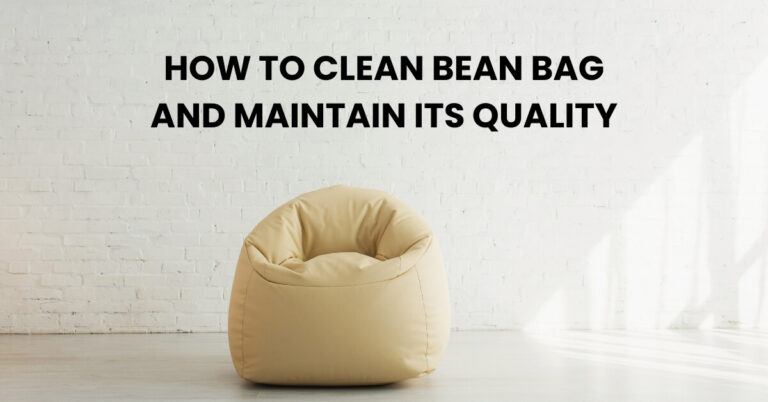Is Nylon Waterproof or Water-Resistant? Fabric Facts Revealed!
Nylon is a popular choice for clothing and outdoor gear because it’s tough and performs well. But, several people wonder ‘Is nylon waterproof or water-resistant?’. We’ll look into what makes nylon water-resistant and how to make it even better at keeping water out. We’ll also compare it to polyester.
Here are some Key Takeaways!
What is Nylon?
Nylon is a synthetic material that has changed many industries. It comes from petroleum and is made through a process called polymerization. This process creates a strong, flexible, and resistant material.
Nylon’s Composition and Properties
Nylon’s strength comes from its polymer structure. Its molecular chains link together, making it tough against tearing and stretching. It’s also flexible and light, making it useful for many things.
Nylon doesn’t wear out easily because of its abrasion resistance. This makes it great for clothes, luggage, and industrial fabrics. It can handle a lot of wear and tear without getting damaged.
Nylon’s Versatility in Various Industries
- In the textile industry, nylon is used for clothes, sportswear, and other items because it’s strong, durable, and light.
- The industrial sector uses nylon for engineering parts, car components, and industrial textiles because of its benefits.
- Nylon is also used for outdoor gear like tents, backpacks, beanbags, and clothes because it’s water-resistant and light.
Nylon is a key material in textiles and industry. It meets many needs in today’s world. From sportswear to industrial parts, nylon’s qualities make it widely used.
Is Nylon Waterproof?

Nylon is a popular fabric known for its versatility and durability. But, its water resistance can change based on its type. In its natural state, nylon likes water and can soak it up.
The water resistance of nylon is measured by its hydrostatic head. This shows how much water pressure the nylon material can take before letting water through. Higher denier nylon, like 210D and 400D, can handle more water pressure.
To make nylon even more water resistant, manufacturers can add special chemicals. These can make the fabric push water away better. But, these treatments might be more expensive than just applying a waterproof coating.
Waterproofing and water resistance are not the same thing. Waterproofing levels go from W1 to W5, with higher numbers meaning better water resistance. Nylon might not be fully waterproof, but it can be very good at keeping water out, especially with special coatings.
| Fabric | Water Resistance | Waterproofing |
|---|---|---|
| Nylon | Highly water-resistant, especially with modifications | Not inherently waterproof, but can be made water-resistant |
| Leather | Water-resistant, can withstand light rain | Not waterproof |
| Quilted Jackets | Highly water-resistant | Completely waterproof |
| Suede | Not water-resistant, absorbs water | Not suitable for wet weather |
| Polyester, Microfiber, Gore-Tex | Highly water-resistant | Completely waterproof |
In summary, nylon isn’t naturally waterproof but can be very water-resistant with the right treatments. The level of resistance depends on the nylon type, its thickness, and any extra coatings.
Enhancing Nylon’s Water Resistance

Nylon is a strong and versatile fabric. But, it’s not waterproof on its own. To make it more water-resistant, a special coating is applied.
Durable Water Repellent (DWR) Coatings
A DWR coating changes the fabric’s surface. This makes water bead up and roll off instead of soaking in. It helps protect against light rain and boosts nylon’s water resistance.
The DWR coating’s strength is measured by the hydrostatic head. This is how much water pressure the fabric can take before it gets wet. Nylon’s hydrostatic head varies by its thickness:
- 7D nylon: 1000-2000 mm hydrostatic head
- 20D nylon: 3000-4000 mm hydrostatic head
- 40D nylon: 5000 mm hydrostatic head
- 400D nylon: 20,000 mm hydrostatic head
Adding a DWR coating to nylon makes it even better at keeping out water. This is great for outdoor use and places where water is around.
| Nylon Fabric Denier | Water Resistance (Hydrostatic Head) |
|---|---|
| 15D | 2000 mm |
| 30D | 4000-5000 mm |
| 50D | 8000 mm |
| 70D | 10,000 mm |
| 210D | 15,000 mm |
| 400D | 20,000 mm |
There’s another way to make nylon better: ripstop technology. This adds extra strength to the fabric. It helps prevent tears and boosts its durability and water resistance.
What Happens When Nylon Gets Wet?
Nylon is a synthetic fabric used in many things. It loves water because it’s hydrophilic. When it gets wet, nylon absorbs water easily. This makes it interesting to see how nylon acts when it’s wet.
Water Absorption and Moisture Retention
When nylon gets wet, it takes in a lot of water. This makes the fabric feel damp and heavy. How much water it holds depends on the fabric’s type, density, and any special coatings.
Nylon’s nature means it keeps moisture well. This can be good or bad. It dries faster than cotton but still holds water, which can be a problem in things like backpacks or outdoor gear.
But, you can reduce the effect of water on nylon with special coatings. These coatings, called Durable Water Repellent (DWR), make nylon better at staying dry. They’re often put on nylon products to help them perform well in wet conditions.
“Nylon packs, specifically 210 and 420 Robic, are praised for their durability but may not stand up by themselves when loaded due to their flexibility compared to laminated fabrics like XPac.”
In short, when nylon gets wet, it absorbs moisture and feels damp. But, with the right treatments, it can be more resistant to water. This makes nylon a versatile and useful fabric for many uses.
Nylon vs. Polyester: Water Resistance Comparison
Nylon and polyester are two synthetic fabrics often compared for their water resistance. Polyester usually beats nylon in this area.
Polyester’s Water-Repellent Properties
Polyester is better at keeping water out than nylon. As polyester fabrics have more threads, they can resist water better. Polyester also dries faster than nylon when wet. But, remember, neither nylon nor polyester can be fully waterproof without special coatings.
The reason polyester is more resistant to water is its molecular structure and how it’s made. Polyester’s fibers are tightly woven, making a strong barrier against water. Nylon, on the other hand, absorbs more water because its fibers are a bit more open.
| Fabric Property | Nylon | Polyester |
|---|---|---|
| Water Resistance | Moderate | High |
| Drying Time | Slower | Faster |
| Abrasion Resistance | Good | Excellent |
| Color Retention | Average | Excellent |
| Recyclability | Moderate | High |
Knowing how nylon and polyester differ in water resistance helps you choose the right fabric. This is important for clothes, outdoor gear, or industrial materials.
Conclusion
“Nylon isn’t waterproof but it can resist water a bit because of its tight fibers” is the best answer to ‘Is Nylon Waterproof?’. To make nylon more water-resistant, a special coating called DWR is often added. This coating helps against light rain. But, remember, this coating can fade over time, making the fabric less water-repellent.
If you’re thinking about using nylon for clothes, outdoor gear, or something else, know how it handles water. To keep nylon working well, reapply the DWR coating regularly. This keeps your items useful in light rain or damp situations.
When looking at nylon versus polyester or Gore-Tex, you see synthetic fabrics have different levels of water resistance. Knowing what each material can do helps you pick the best one for your needs. This is true for outdoor gear, clothes, or other uses.







